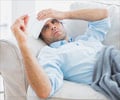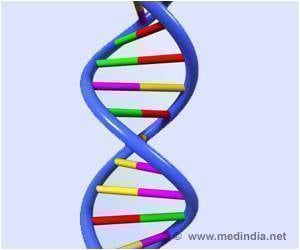Plaque, typhoid and cholera, most dreaded diseases that are caused by bacteria have one thing in common - needle complex.
Plaque, typhoid and cholera, most dreaded diseases that are caused by bacteria have one thing in common - needle complex. These bacteria when attacking a cell develop numerous hollow needle shaped structures. Through these needle complexes the bacteria inject signal substances into the host cells and with the aid of these needle structures the bacteria overcome their defense.
The biochemist and biophysicist Thomas Marlovits, a group leader at the Vienna Institutes IMP (Research Institute of Molecular Pathology) and IMBA (Institute of Molecular Biotechnology) has been occupied for several years with the infection complex of salmonellae. As early as in 2006 Thomas Marlovits showed how the needle complex of
Salmonella typhimurium develops (
Nature 441, 637-640). Together with his doctoral student Oliver Schraidt he has now been able to demonstrate the three-dimensional structure of this complex in extremely high resolution. The team was able to show details with dimensions of just 5 to 6 angstroems, which are nearly atomic orders of magnitude. Their work will be presented in the forthcoming issue of the journal
Science.
Looks do kill!
Never before has the infection tool of salmonellae been presented in such precision. This was achieved by the combined use of high-resolution cryo-electron microscopy and specially developed imaging software. "Austria's coolest microscope" makes it possible to shock-freeze biological samples at minus 196 degrees centigrade and view them in almost unchanged condition. However, when "zooming in" on their object, scientists are confronted with a treacherous problem: the high-energy electron beam falls at such high concentrations on the sample that the latter is destroyed after the very first image.
The Viennese scientists have resolved the problem by developing new image-processing algorithms and with sheer numbers of images. They analyzed about 37,000 images of isolated needle complexes. Similar images were grouped and computed jointly. By doing so they were able to generate a single sharp image from numerous blurred ones. This enormous computing power was created by a cluster of about 500 interconnected computers.
Microscopy without the human interference factor
The microscope works in semi-automated fashion at night to obtain the large number of images. This is very advantageous because human beings merely interfere with the job. They breathe, speak, move, and thus unsettle the sensitive microscope. Even a moving elevator may irritate the electron beam.
Advertisement
The cryo-electron microscope at IMP-IMBA is the only one of its kind in Austria. The immense technical effort associated with its operation pays off, as far as the scientists are concerned. Advancing into the subnanometer range created a further means of expanding their knowledge. They were able to "adjust" existing data (obtained from crystallography) to the needle structure and thus complement the three-dimensional image in a perfect manner. The use of this hybrid method enabled the scientists to elucidate the complete construction plan of the infection apparatus.
Thomas Marlovits regards this technology as an innovation boost: "Using the methods we developed for our work, we were able to establish "imaging" standards at a very high level. We can explore its absolute limits with the aid of the fantastic infrastructure we have here at Campus Vienna Biocenter."
Advertisement
This knowledge not only advances basic research. "Using our data, we may well be able to find a compound that interferes with the needle complex and disturb its function," says Marlovits. "We would then have a very effective medication - one that combats not only salmonellae but also other pathogens that employ this system, such as pathogens that cause cholera, plague or typhoid."
Source-Eurekalert











